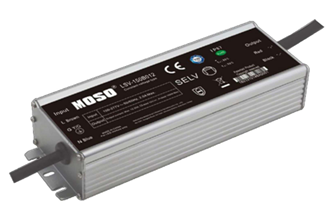The lack of power supply originated from the Great East Japan Earthquake made people's awareness of power saving rise rapidly. LED lighting appliances and LCD TVs using LED backlights are gradually becoming the mainstream of the market. For LED lighting, light bulbs, fluorescent tubes, chandeliers, and ceiling lamps have begun to enter the market. Among them, LED bulbs are not only well-known lighting manufacturers, but also new products involving companies have begun to sell at low prices in home appliance stores. The LED bulb market is rapidly expanding. At the same time, an environment for the popularization of LED bulbs, such as standardization and introduction of laws and regulations, is also being established. Previously, LED light bulbs were not covered by the "Electrical Appliance Safety Law." Therefore, some LED lighting products have higher electromagnetic noise. As a result, if the lamp of a street lamp is changed from a mercury lamp to a LED lamp, it will cause obstacles in the reception of television and radio. Incandescent light bulbs are resistive loads that do not have a power circuit inside, so there is no such electromagnetic noise problem. However, the problem became apparent after replacing the LED bulb. If you promote the popularity of LED lighting in this way, there will be multiple sources of noise in your home. Therefore, overseas, LED lighting equipment and general lighting equipment must comply with the international standard CISPR15 ("Limits and Measurement Methods for Radio Disturbance Characteristics of Electrical Lighting and Similar Equipment"). All countries have introduced restrictions based on this standard. Japan will also begin to use such restrictions. Starting from July 2012, LED bulbs will be the object of the "Electrical Appliance Safety Law." It also includes provisions concerning the noise intensity (the frequency band of the predetermined noise terminal voltage is 526.5 kHz to 30 MHz, and the frequency band of the noise power is 30 MHz to 300 MHz). Regardless of whether the "Electrical Appliance Safety Law" is implemented or not, along with the expansion of the LED lighting market, mutual interference with other electronic products cannot be avoided. The source of the electromagnetic noise of the LED bulb is its power circuit. Since the power supply portion of the LED light bulb is relatively limited in size, it is necessary to implement electromagnetic noise countermeasures with a minimum number of components. Especially important is the choice of noise countermeasure components. Therefore, this article will analyze the type of electromagnetic noise leaked by the LED lighting power circuit, its measurement method, and the component selection method that can effectively suppress electromagnetic noise. Noise current has two modes Under normal circumstances, EMC (electro-magnetic compatibility) standard defines two kinds of electromagnetic noise measurement, namely "radiated noise" radiated into the air and "conducted noise (noise terminal voltage) flowing through the power line. "(figure 1). In the noise current, there are both "differential mode" and "common mode" noise components. Differential mode noise is the noise generated between the signal line and ground. The common mode noise is the noise generated between the ground and the signal line and the ground and the ground. The noise type between the signal line and the ground line is the same as that between the ground and the same ground, which has the same phase and the same amplitude. The EMC regulations define measurements of both radiated noise and conducted noise, and LED bulbs are no exception. The noise of some LED bulb products exceeds the CISPR15 specification (quasi-peak: QP and average: AV). The main component of radiated noise is common-mode noise (Figure 2(a)). This is because the noise current loop area is much larger than the differential mode noise current loop area. Electromagnetic noise has differential mode and common mode. The radiated noise is mainly the common mode component (a). In the conduction noise, there are many cases where the differential mode and common mode components are mixed and propagated (b) Differential and common-mode components can be observed in conducted noise (Figure 2(b)). If it is conducted noise, it is necessary to take countermeasures based on the characteristics of the noise component based on its characteristics. First, let's introduce the method of suppressing conducted noise. Differentiating power supply noise patterns Conducted noise measurement, generally using a V-type artificial power network, for the respective electromagnetic noise of power line 1 (L1) and power line 2 (L2), measuring quasi-peak value (QP value) and average value (AV value, Figure 3 ( a)). Although the V-type artificial power network can measure the noise voltage between each power line and the earth, it is not clear which noise mode is the main body because both the differential mode noise and the common mode noise are combined. In the measurement of conducted noise, the quasi-peak value and the average value (a) are generally measured using a V-type artificial power supply network for each electromagnetic noise of the power line 1 (L1) and the power line 2 (L2). In this measurement, differential mode noise and common mode noise are combined, and it is difficult to distinguish which noise mode is the main body. If the Δ artificial power network is used, it is easy to distinguish the type of noise pattern (b). The power network can measure its frequency characteristics according to the noise mode (Sym: differential mode, ASym: common mode). * Quasi-peak: When measuring electromagnetic noise, etc., use the value measured by the detector with an extended time constant of the detector. Is the value between the maximum and the average. When the quasi-peak value of electromagnetic noise is large, it is easy to cause radio reception obstacles. The correlation with the same receiving sensitivity is stronger than the peak value. However, if the "Δ type artificial power network" is used, the type of noise pattern can be determined (Fig. 3(b)). The circuit network can measure the frequency characteristics of each noise pattern in conducted noise. This frequency characteristic varies depending on the product type. For example, there are differences in the frequency characteristics of electromagnetic noise between LED bulbs, chandeliers, and large-size LCD TVs (Figure 4). The LED bulb is mainly based on differential mode noise, and the LED pendant lamp is mixed with differential mode noise and common mode noise. Large-size LCD TVs are dominated by common-mode noise. The types of electronic products have changed, and the composition of noise components has also changed. For example, LED bulbs are mainly differential mode noise, and differential mode noise and common mode noise in LED pendant lamps are mixed together (a, b). Large-size LCD TVs are mainly common-mode noise (c). So, why do different products have a specific tendency to conduct noise noise components? By analyzing this tendency using electromagnetic field simulation, you know why. The noise pattern depends on the size Conducted noise measurements were conducted in a shielded room. Measurement conditions are regulated by standards such as "CISPR16-2" or "ANSI63-4". The two standards stipulate that the distance between the reference plane of the shielded room and the measured object shall be maintained at 0.4m, the length of the wire connecting the artificial power network and the measured object shall be 0.8m, and the measured object shall be set on a table with a height of 0.8m ( Figure 5). This figure shows the measurement of conducted noise. The measurement is performed in a shielded room. The specific measurement conditions are specified by specifications such as "CISPR16-2" or "ANSI63-4". At this point, common mode noise will flow out through the distributed capacitance between the shielded interior wall (metal) and the measured object. We model this situation and then use electromagnetic field simulation to analyze the relationship between the size of the measured object and the common-mode noise elusion (common-mode impedance). We simulated four kinds (5×5×5cm3, 10×10×10cm3, 20×20×20cm3, and 100×80×20cm3) of objects of different sizes by electromagnetic field simulation and calculated the observations by the artificial power network. The impedance when measuring the object (Figure 6). Electromagnetic field analysis was performed using four kinds of objects of different sizes, and the common mode impedance (a) when observing the measured object from the artificial power network was calculated. According to the results, the larger the shape, the greater the distributed capacitance between the reference surface of the shielding room and the object to be measured, and the lower the impedance of the common mode path (b). In addition, the higher the frequency, the lower the common-mode impedance (c). The table in FIG. 6 lists the common-mode impedance at 1 MHz and the value converted from this impedance to distributed capacitance. From the results of the electromagnetic field simulation analysis of the four types of objects, it can be seen that the larger the shape, the greater the distributed capacitance between the shielded inner wall and the measured object. That is, the larger the product size, the lower the impedance of the common-mode path and the easier the flow of the common-mode noise current, the more easily the noise component becomes larger.
Universal input voltage 90~305Vac; Constant voltage design; Active power
factor correction; High power factor > 0.96; Multiple protection: SCP, OVP,
OTP, OLP; Surge protection: 35W/50W: line-line 4KV, line-earth 6KV 75~320W:
Line-line 5KV, line-earth 10KV; Degrees of protection: IP67; Ambient
temperature: -40℃~+60℃; 5 years warranty.
The wattage: 35W/50W/75W/100W/150W/200W/320W.
The output voltage: 12V/24V/36V/48V.
The LED power supply got global safety certifications, including UL, CE,
TUV, CB, SAA etc. The LED control gear has universal input voltage, from
90~305Vac. It is a reliable product compatible with various landscape application
and different countries.
Due to the high IP rating, the LED driver can be used for dry, damp, wet
locations. It is suitable for installing outside of the fixture. The
perfect cooling design can ensure the product reliability and long lifetime for
at least 10 years (50,000hours operation at least) minimum.
Constant Voltage LED Driver Constant Voltage LED Driver,Constant Voltage Driver,12V LED Driver,24V LED Driver Moso Electronics , https://www.mosoleddriver.com


LED bulb noise countermeasures: There are two modes of noise current
The revised Japan Electrical Appliance Safety Law will be implemented from July 2012. After this revision, LED bulbs have also become the object of application of this regulation. Among several restrictions, particular attention is paid to the limits of electromagnetic noise intensity. At present, there are LED lighting devices in the market that have higher electromagnetic noise than incandescent light bulbs and light bulb type fluorescent lamps. With the implementation of the revised "Electrical Appliance Safety Law," strict noise countermeasures must be taken. This article will analyze the noise types, evaluation methods and countermeasures of LED lighting according to the status quo of LED lighting.